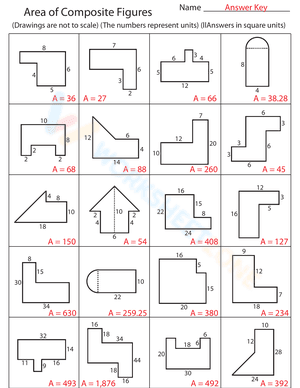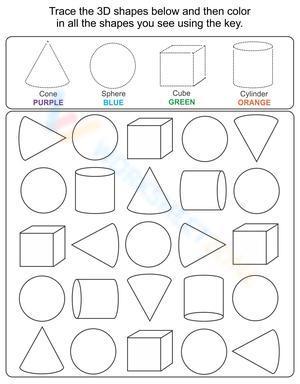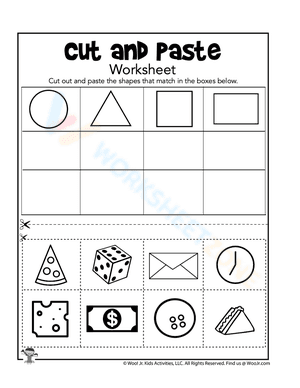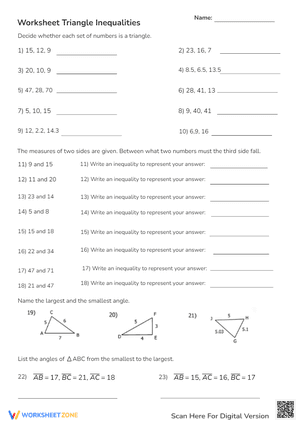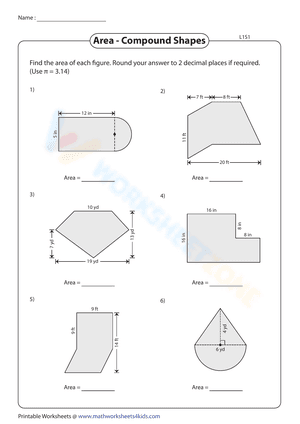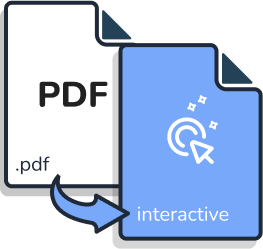Did you realize that shapes are crucial in the formative stages? Shapes are really among the earliest concepts that toddlers understand. This is because shapes play such a significant role in our daily lives. Learning shapes is a crucial ability that helps young children understand many concepts they will come across in school.
Consequently, for the purpose of providing their kids a head start, parents and other adults who are responsible for them should begin educating them about shapes from an early age. Now we give you an effective method to learn about shapes: shapes worksheets.
Shapes and the Early Years
Children can recognize and play with different shapes long before they start drawing them or even learn their names. Shape recognition is among the first skills that are taught to youngsters. They start to become aware of the contours of the things in their environment and the gaps that exist between those shapes the moment they are born. As they become older, youngsters get a deeper understanding of geometric shapes as well as the qualities or aspects that define them. This is a significant process because the role that shapes play in our day-to-day lives is significant.
Giving young children, particularly toddlers and preschoolers, plenty of opportunities to practice with shapes not only helps them build a foundation for future learning but also gives them an edge in a wide variety of other aspects of education as well.
Learning shapes is an important ability that may help children with basic literacy, mathematical, and scientific concepts that they will meet throughout their education. These topics will be covered in a variety of subjects. When your kid is young, encouraging them to think about and speak about different kinds of shapes may have a significant influence on their schooling in the early years.
The Importance of Shape Learning From the Early Years
The early learning and development of your kid depend greatly on you as the caregiver. Below are 5 reasons why it's crucial that you assist your young child in learning about shapes.
Aids in the recognition of letters and numbers
The development of early reading and numeracy abilities in toddlers and preschoolers is one of the most significant advantages of learning about shapes. The letters and numbers in our alphabet and number system are made out of the same shapes that we see all around us in daily life.
Children will be better prepared to learn about letters if they can recognize shapes. Preschoolers who are able to distinguish between shapes will be better able to recognize the differences in the alphabet's letters, which are fundamentally made up of lines and shapes. Once your kid has a deeper understanding of this subject, they may start to apply what they have learned about letters and shapes to writing on paper.
Learning shapes in addition to letters might aid your youngster in improving their capacity to recognize numbers. Preschoolers must master number recognition, or the ability to identify and name numbers quickly and correctly, before moving on to more difficult arithmetic concepts like addition and number comparison.
Shapes can be discovered in numbers just as they can be found in the characters we use. Preschoolers who have a strong understanding of shapes may find learning to recognize and name numbers simpler. For instance, the number eight is basically composed of two circles.
You may help your kid lay the groundwork for early reading and arithmetic abilities that will be very helpful to them in future learning by educating them about shapes and assisting them in recognizing shapes in letters and numbers.
Enhances classification and sorting skills
The development of sorting and categorizing, or categorizing, abilities in toddlers and preschoolers is another significant advantage of shape learning. Children must group items into groups based on their similarities or differences in order to sort and categorize them. Children need to develop this talent since it aids in their understanding of the world.
In order to understand the distinctions between shapes, toddlers and preschoolers must focus on their distinctive qualities. When young learners start sorting shapes, they must depend on their abilities of observation and visual judgment to identify and classify them according to their characteristics. A youngster may, for instance, combine all the squares and all the circles together.
Young children may learn that all triangles have three sides and three corners via shape sorting exercises, and subsequently, they can learn that not all triangles are the same. Children may better comprehend how things connect to one another by categorizing shapes or any other items. Children will utilize sorting and categorizing extensively in science.
Improves vocabulary acquisition
The improvement of language is one of the most evident advantages of teaching shapes to infants and preschoolers. Children are basically learning new words when they are taught the names of shapes and exposed to a variety of shapes and their features.
Although learning and remembering shape terminology might be challenging for young children, it is a crucial step in language development. Children get increasingly adept at describing shapes in depth as they learn more about them and their names. A youngster who is able to recognize shapes and their characteristics, for instance, may state that a triangle has three corners and that a square has four equal-length sides.
Shape naming is but one component of vocabulary development. Children pick up new ideas when they learn about shapes and their characteristics. Young students are better prepared for future learning in other topic areas by learning about shapes.
Shape worksheets introduce basic mathematical concepts
Young children may learn about mathematics via the study of shapes. In fact, teaching kids about shapes may aid in the development of crucial abilities like counting and fundamental arithmetic. Your kid is really learning about geometry, the study of shapes, when they play with their beloved blocks, riddles, or nesting toys.
By detecting, describing, evaluating, and comparing shapes, kindergarten students are expected to master geometry abilities according to the Common Core State Standards for Mathematics. Giving your kid a head start on learning in order to achieve those early geometry requirements, and teaching your kids about shapes will assist to guarantee they have good knowledge by the time they attend kindergarten.
As they sort and count the number of shapes in a group or count the number of sides a shape has, children may learn to count while working with shapes. Teaching young children about shapes helps provide the groundwork for some early arithmetic abilities that kids may utilize when they face more difficult concepts.
Enhances knowledge of spatial relations
Another skill that is formed via shape learning is the capacity to comprehend spatial interactions. Understanding how things are positioned in relation to one another is known as spatial relation. As kids gain more shape knowledge, it will help them grasp spatial relationships in various spheres of their lives, including play!
When a young kid learns the characteristics of a circle, for instance, he may connect it with the circular hole on his favorite toy. When solving puzzles, kids add to their understanding of shapes. Children should concentrate on the shapes of the puzzle pieces in order to determine which puzzle piece goes where.
Learning about shapes is a crucial early-childhood ability that lays the groundwork for future reading, arithmetic, and scientific abilities. Teaching shapes to young children helps them build language, spatial relations, sorting, and classification abilities. You can assist your kid in laying the groundwork for a successful learning future by getting them started early.
What are Shapes Worksheets?
Shapes worksheets are an excellent tool for assisting pupils in comprehending a variety of shapes and the qualities that distinguish them. Students in junior kindergarten may improve their shape recognition skills with these worksheets, which also teach them how to draw and practice these shapes. These math worksheets include questions based on shapes in a variety of shapes, such as matching shapes with objects, coloring shapes, multiple choice questions (MCQs), and other types of questions.
Students who have a good grasp of shapes are better able to become aware of their surroundings and recognize a wide variety of items. The shape is a highly significant notion. Shapes worksheets provide pupils with a visual aid that assists them in conceptualizing the many kinds of shapes. Students are able to see things in action thanks to the visual simulations included in these Math worksheets, which contribute to a clear grasp of the subject on which they are working.
Shapes worksheets are created in an appealing way with the assistance of colors and graphics, which helps to maintain an intriguing and engaging atmosphere throughout the learning process. Students may avoid being confused between the various shapes by working through many shape worksheets, which can also help students learn the properties of different types of shapes.
Types of Shapes Worksheets
Using these engaging worksheets, students will have a lot of fun while also developing their skills in tracing, matching, spatial awareness, and identifying shapes. They include simple shapes like circles, triangles, squares, and rectangles, as well as more intricate shapes like stars, trapezoids, hearts, ovals, diamonds, and a variety of other shapes. Below are several types of shapes worksheets that might be beneficial for your class:
Tracing Shapes Worksheets
Your toddlers and preschoolers will benefit in so many ways from learning about different shapes. One of the advantages of teaching children different shapes is that it assists them in distinguishing between different types of items. Children have a greater tendency to concentrate on the minute particulars and to remember how the various shapes relate to one another. These worksheets feature a ton of entertaining tasks, such as learning shapes, coloring, and following instructions.
Preschool Shapes Worksheets
Children are able to notice variations in items and the shapes they take from a very young age. When learning the exact parameters of each shape, such as their look and the number of sides that each shape comprises, may take young children a little more time than expected at times. Children in preschool who have plenty of experience working with shapes may strengthen their grasp of structures in two dimensions by working with the shapes. Toddlers and preschoolers benefit tremendously from engaging in hands-on activities such as shapes worksheets.
Shapes for Kindergarten Worksheets
This kind of detail-oriented learning is important for everything in life since it helps young children understand distinctions between two items, such as the shape of printables we provide. We strongly advise that parents of young children give their children plenty of opportunities to practice learning their shapes.
Color by Shape Worksheets
The students practice and improve their abilities in a variety of areas, including matching colors, naming and recognizing shapes, and following instructions. In addition, the activities assist youngsters to improve their ability to concentrate while also improving their ability to follow instructions. It is certain to be an enjoyable exercise because it provides a mix of amusement, education, and experience in the process of learning shapes.
Shape Name, Trace and Color Worksheets
Students are going to have a lot of fun with these coloring worksheets, shape name worksheets, and shape identification worksheets. In this enjoyable exercise, they will be able to express their creativity via the medium of ice cream, houses, and boats.
Shape Tracing and Drawing Worksheets
With the help of these worksheets for the next level of shape drawing, tracing shapes has evolved into drawing them freehand. It is a wonderful method for stepping up to the next level. These worksheets are a wonderful method to advance in drawing shapes since they include both easy and complicated shapes.
Shape Symmetry Worksheet
As students complete the shapes and trace the connections, they will acquire the ability to follow instructions, which is an important life skill. These worksheets teach shape identification by using basic shapes such as circles, squares, and triangles as well as more complicated shapes such as hearts, trapezoids, octagons, hexagons, and many more. A worksheet that emphasizes symmetry, as well as the fundamentals of fractions, is what you need to take it to the next level.
Benefits of Using Shapes Worksheets
Have you ever wondered how kids might improve their understanding of the world by using shape worksheets? Kids benefit greatly from using worksheets as a teaching tool. Children's understanding of shapes may be strengthened as they have fun with shapes worksheets. Children are provided with a wide variety of activities to choose from to keep their attention while teaching them everything about the various shapes.
Students get a solid grounding in the study and comprehension of shapes by working on geometry worksheets or shapes worksheets. Beginning lessons at a young age is the most effective strategy for parents to guarantee that their children have a strong understanding of fundamental concepts. This will benefit the children as they go through more sophisticated themes in geometry and mathematics courses. Shapes worksheets are beneficial to your kid in a number of ways, including the following:
Shapes Worksheets Establishing a Strong Basis for Geometry Skills
When children first attend preschool, they should already have some experience with basic geometric shapes. They should be able to recognize geometric shapes of items at an early age since this will benefit them while they are learning more sophisticated geometry in school. Children who practice detecting patterns by working with shape worksheets tend to be better at pattern recognition overall, which is one of the most essential abilities in mathematics.
Shapes Worksheets Reinforcement of skills
Shapes worksheets provide a wonderful chance to practice fundamental abilities like pattern identification. They teach youngsters to recognize and differentiate between different geometric shapes such as circles, squares, and rectangles.
Practices in the Drawing Shapes
Young children may practice drawing lines and curves until they master the proper way to create shapes. After they have mastered this ability, they will be able to go on to additional activities such as coloring shapes or mixing them with a variety of other shapes and objects. In addition, you may help children refine their knowledge by providing them with worksheets that require them to match shapes.
Encouragement of Independent Thought and Creative Activity
Children are able to exercise their creativity and imagination in a contained setting that does not necessitate the use of dirty paints or markers. They are also able to experience the satisfaction of knowing that they developed something entirely on their own.
Assistance in Comprehending the Fundamental Concepts
Mathematically speaking, shapes are the most basic building blocks since they can be used in practically every facet of education. It indicates that although your kid is learning to write numbers, letters, and words, they will spend a significant amount of time sketching the same shapes over and over again. Your kid will be able to practice these abilities more effectively with the aid of a shape worksheet, all while having the opportunity to express their creativity via drawing.
Huge Shapes Worksheets Resources at Worksheet Zone
Your learner may improve their fine motor skills by tracing different shapes on these free coloring sheets. They also have the ability to assist your pupil with other abilities. You may use these pages to teach your pupil the names of the different shapes. "Take a look at this shape. There are eight sides to it. Let's take a tally of them. What do you call a shape that has eight different sides?
These pages may also be used to assist your pupil with analyzing shapes in two dimensions if they are needed. Ask questions. Is an oval the same thing as a circle? In what ways are they equivalent? What makes them unique from one another? What is the total number of sides that a triangle has? How many sides does a square have? Which one of these shapes resembles a kite the most, in your opinion? Which of these shapes most closely resembles a ball or a clock? Make use of the questions to educate students on how to think critically.
Free Shapes Worksheets
Several different sets of free shape tracing worksheets are available here. Look through the following list to select a topic that corresponds to the one you're currently focusing on or that one of your students is interested in.
You may match the pages on our site to a variety of different themes. For example, the frog shape tracing worksheets might be utilized for a topic centered on spring or a theme centered on a pond. The shape worksheets of a hedgehog might be used for either a theme involving wild animals or a theme involving pets. The ladybug shape tracing worksheets are versatile enough to be utilized with a variety of themes, including those centered on insects, gardens, or even summer. There is a huge variety of alternatives.
How to Use Worksheet Zone Shapes Worksheets?
The Shapes Worksheets on our website are all built-in PDF or printable formats. As a result, you can download, print, and use it anytime.
However, you are better off printing them out and giving them to your students to practice. Being directly exposed to Shapes Worksheets will give kids a more intuitive and vivid view of shapes, thereby improving teaching efficiency.
Overall, shape worksheets have been proven to be very effective in reinforcing the memory of shapes in children. So all you need to do is find a reputable and diverse source of shapes worksheets, and get ready right now!
